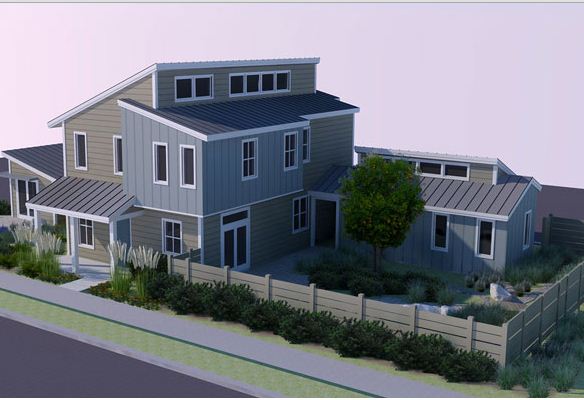Honda has launched Honda Smart Home US, a host of technologies that enable zero net energy living and transportation.
Located on the West Village campus of the University of California, Davis, the home features technologies that can produce more energy on site from renewable sources than it consumes annually, including the energy required to power a Honda Fit EV for daily commuting.
The home is also three times more water-efficient than a typical U.S. home, Honda said.
The home will function as a living laboratory where the company, along with researchers from UC Davis and Pacific Gas and Electric (PG&E), will evaluate new technologies and business opportunities at the intersection of housing, transportation, energy and the environment.
UC Davis’s West Village, where the Honda Smart Homes is located, is the largest planned zero net energy housing development in the U.S.
Honda Smart Home US implements Honda’s home energy management system (HEMS), a proprietary hardware and software system that monitors, controls and optimizes electrical generation and consumption throughout the home’s microgrid.
A 9.5kW solar photovoltaic (PV) system mounted on the roof will generate more energy than the home and Fit EV consume on an annual basis, due in large part to the efficient design of the home.
The Honda Fit EV included with the home has been modified to accept DC power directly from the home’s solar panels or stationary battery, eliminating up to half of the energy that is typically lost to heat during DC-to-AC and AC-to-DC power conversion.
In the ground beneath Honda Smart Home’s backyard, eight 20-foot deep boreholes allow a geothermal heat pump to harness the ground’s relatively stable thermal sink to heat and cool the home’s floors and ceiling throughout the year.
Honda has replaced half of the cement used in concrete with a naturally occurring substance called pozzolan. A technique called post-tensioning, which uses steel cables to compress the concrete slab, was also used to reduce the amount of concrete and steel needed.
The house uses LED lighting which is five times more energy-efficient than conventional lighting; it is also designed to support the health and wellness of the home’s occupants. Also the “passive design” techniques used in the reduce the energy needed for heating and cooling while maintaining comfortable living conditions.
Sustainable materials were used throughout the construction process. Finally, 96 percent of the construction waste associated with the project, including drywall, brick, plastics and lumber, was recycled.
Through a combination of advanced technology integration, energy efficiency measures and sustainable design techniques, Honda Smart Home surpasses that goal by producing enough energy to power the home and an electric vehicle on a daily basis, Honda said.
Honda Smart Home is three times more water-efficient than a typical U.S. household. Some of the techniques used in the home include dual-flush toilets with WaterSense certification, along with low-flow faucets in the sinks and showers and a high-efficiency washing machine and dishwasher all contribute to water savings.
A technique called xeriscaping was used in the garden, where 30 percent of a typical home’s water is consumed. Plants that thrive naturally in arid climates were selected, while filtered greywater recycled from the home is the only source of water other than rain.

